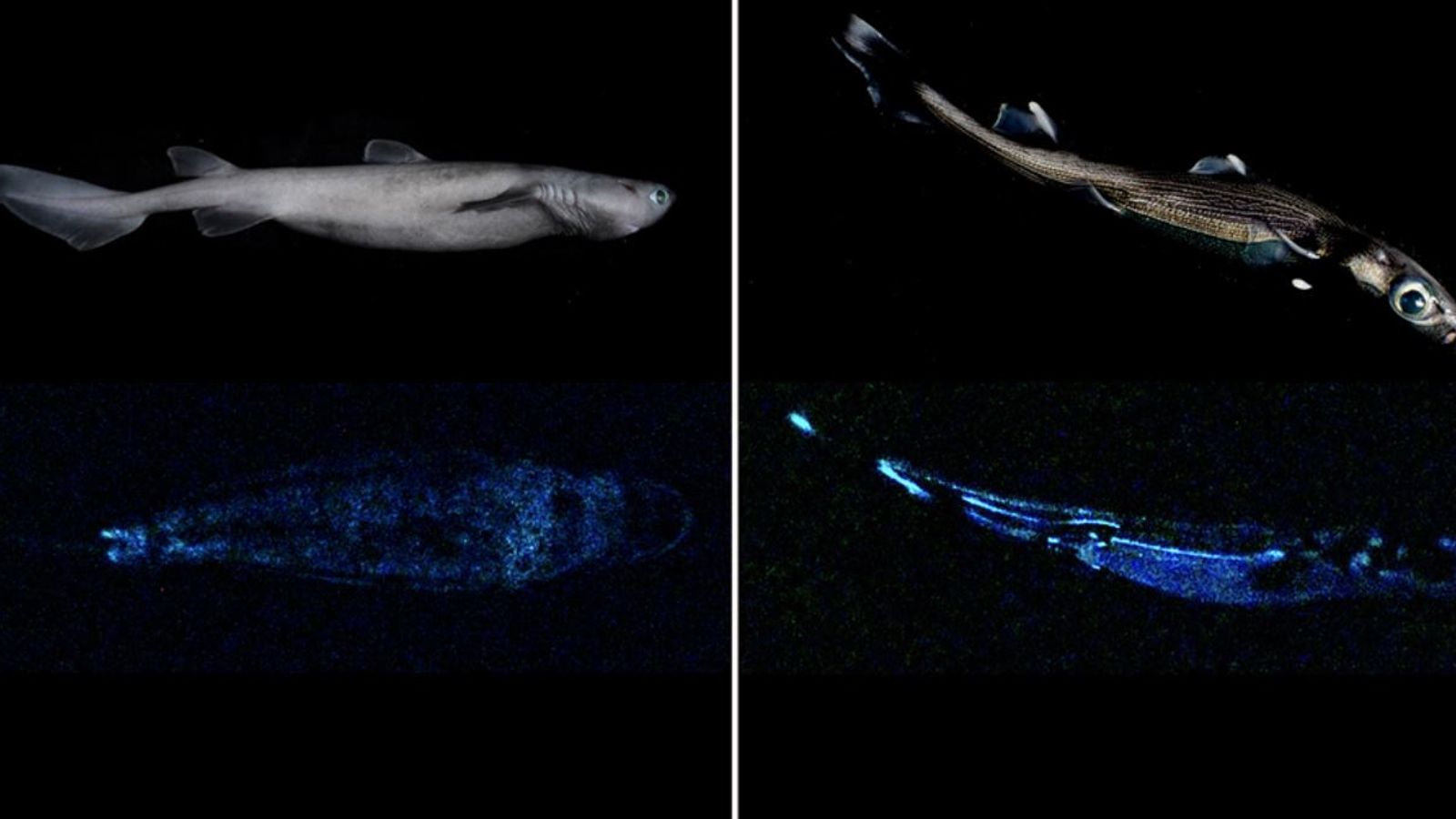Scientists have found three new deepwater shark species that can glow in the dark.
The kitefin shark, the blackbelly lanternshark and the southern lanternshark were collected from the Chatham Rise, off the east coast of New Zealand’s South Island, in January last year.
The species were already known to marine biologists but this was the first time that they were found to emit light, or have bioluminescence.
Among the sharks, the kitefin is the largest-known luminous underwater creature, usually found swimming 300 metres below sea level preying on smaller sharks, ground fish and crustaceans.
Other sea life, including jellyfish and squid, can emit light but the researchers concluded that the sharks’ glowing underbellies might be used to help them hide from predators or other threats.
They said in the study: “Bioluminescence has often been seen as a spectacular yet uncommon event at sea but considering the vastness of the deep sea and the occurrence of luminous organisms in this zone, it is now more and more obvious that producing light at depth must play an important role structuring the biggest ecosystem on our planet.”
The research, by Jerome Mallefet and Laurent Duchatelet of UC Louvain, and Darren Stevens of New Zealand’s National Institute of Water and Atmospheric Research, was published in Frontiers in Marine Science.
Mr Mallefet told New Zealand news website Stuff that 57 out of 540 known shark species could produce bioluminescent light.
Before now, no one had recorded bioluminescent sharks producing light in New Zealand waters, and he said there may be many more.
“They are glowing in the dark. They are not producing flashes. They are glowing for a long time,” he said.






















